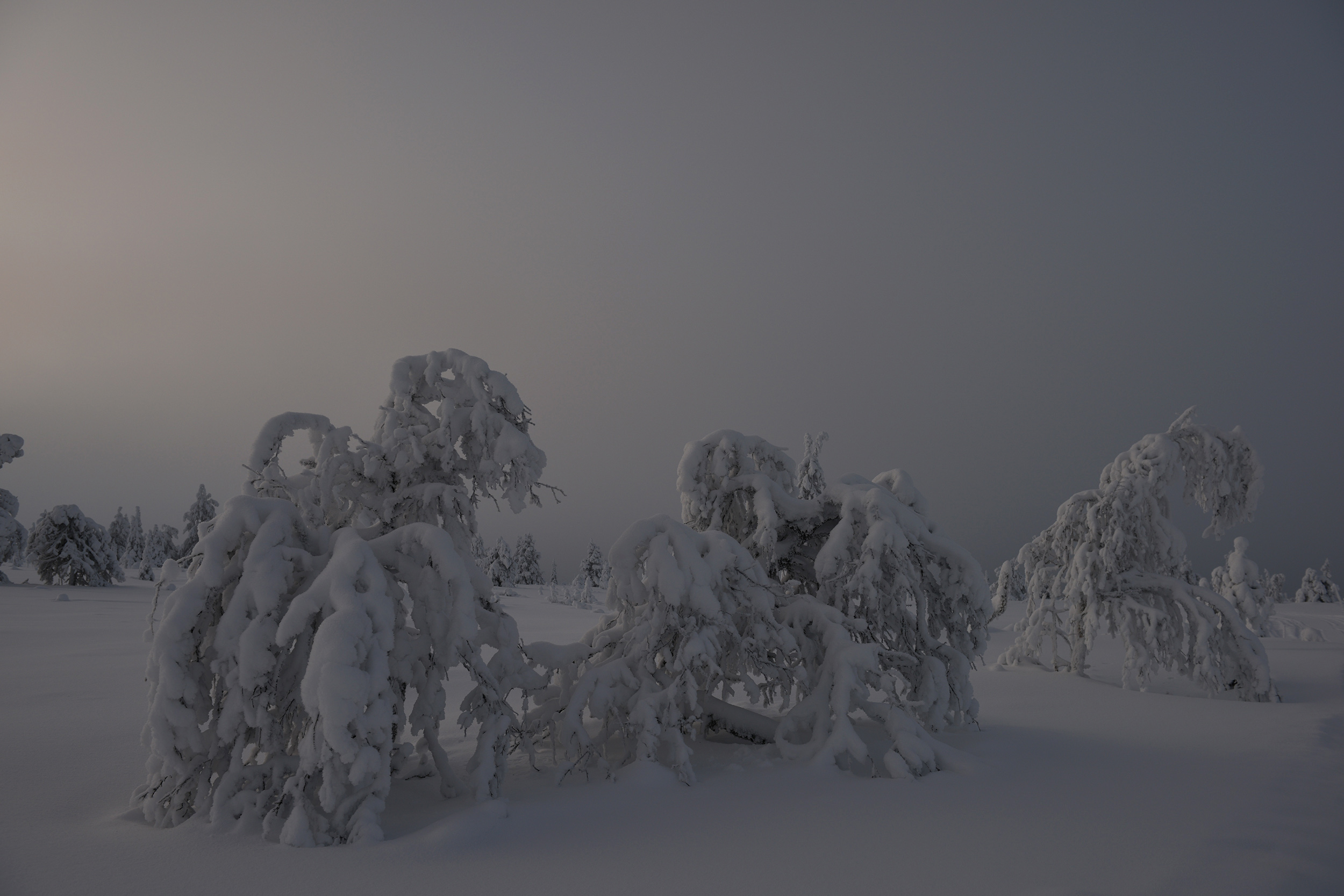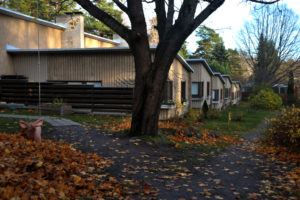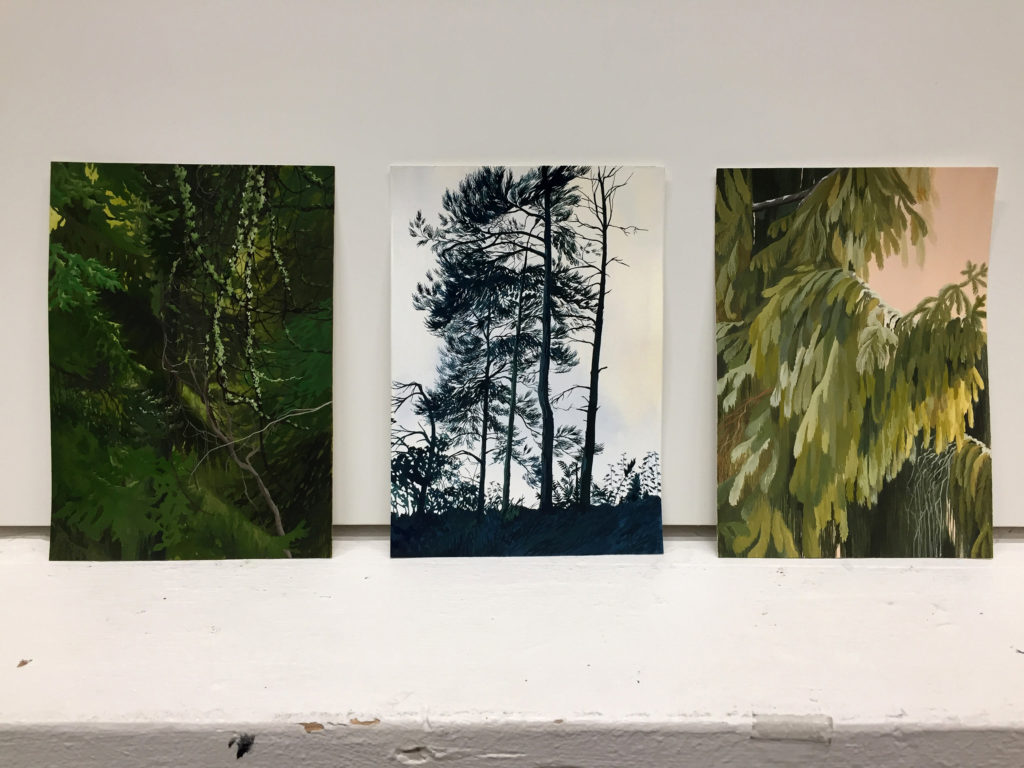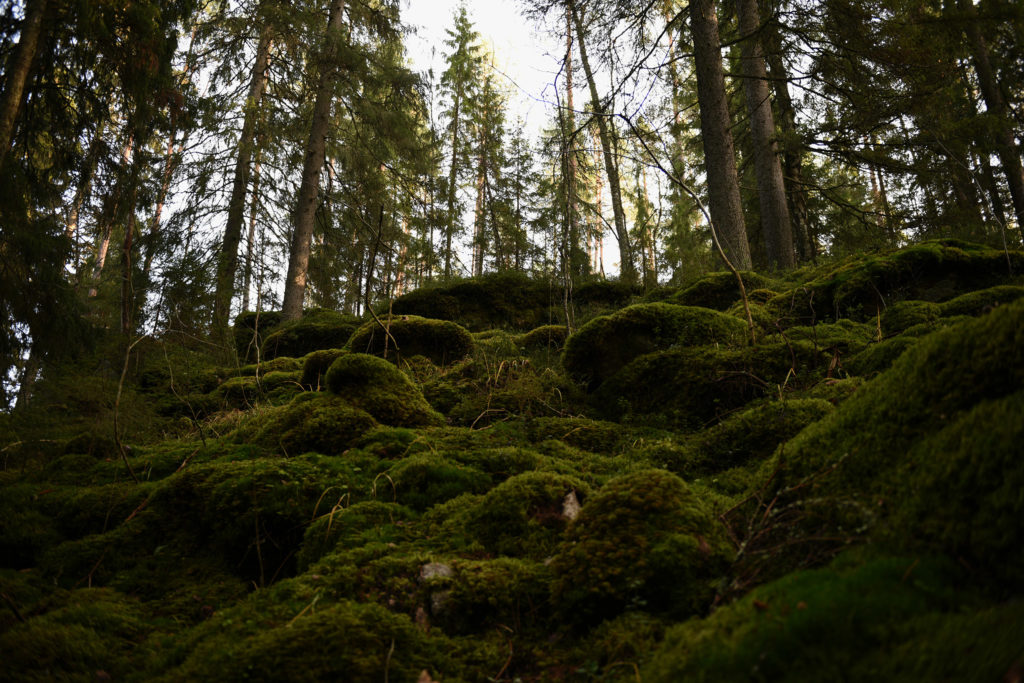
ARTIST ANDRÉANNE GODIN ON HER EXPERIENCE AT THE TAPIOLA GUEST STUDIO
15.12.2020
Interview: Ida Taavitsainen
Images: Andréanne Godin
Andréanne Godin is an installation and drawing based artist living in Montreal. Interested in human emotional response to light, colour and space, she uses landscape as a means to connect to our collective memory. She was artist-in-resident at the Tapiola Guest Studio from September to December 2019. During her stay she explored the fluctuations in daily light, studied interactions activated by additive and subtractive colour synthesis on pigment-based works on paper and created a series of large-scale drawings.

Since 1997 the Finnish Artists’ Studio Foundation and Conseil des Arts et des Lettres du Québec (CALQ) have collaborated in a residency exchange program. Each year one Finnish artist gets the opportunity to live and work in Canada while one Canadian artist comes to Finland to the Guest Studio in Tapiola. The studio is located in the Tapiola Studio House, a semi-detached building with ten residential studios, one of which is reserved for the artist exchange programmes. The wooden building was designed for visual artists by modernist architect Professor Aulis Blomstedt in 1955 and is located about 10 km from the centre of Helsinki. The residency provides a peaceful working environment for artists to develop their practice and an opportunity to get acquainted with Finnish artists and art scene. In Finland, the residency program is made possible with support from the Arts Promotion Centre of Finland and the City of Espoo.
Andréanne Godin, why did you apply for the residency?
There are so many reasons! I was always very intrigued by all living entities’ relationship to light and I was looking to be exposed to the quick luminous decline offered by the diminishing daylight during fall. I am a romantic at heart so I wanted to feel and learn how to tame darkness in a both literal and figurative way. I wanted to discover how another population had dealt with it while experiencing their customs. I wanted to get lost in a language so far from my own that I could loose my footing. I was hoping to get to see the Northern lights by travelling north. I wanted to be surrounded by a boreal forest that felt both familiar and foreign as I was raised surrounded by one. The CALQ studio in Espoo allowed for the extreme luxury to find isolation in plain sight as well as in nature. Strangely, residencies are providing for an opportunity to press pause on our lives and evolve outside of the pressures of efficiency, production and deadlines; a mental space where introspection and reflection is allowed in order to open ourselves to renewed strategies for our work to unfold.
Has the residency influenced your artistic practice or your life in general?
Absolutely, in so many ways… I have reconnected with my fascination for and with water while discovering the weekly Finnish sauna culture and traditions which have helped me to reach a certain inner clarity and awareness to my own body. With this physical displacement, I felt that I was given the opportunity to adopt a new living posture. I adopted new habits, which were both more and less structured then in my life back in Montreal. When in Finland, I tried to get out at least once a day for a walk and once a week to be exposed to a new experience. This rhythm carved a desire to travel back to Finland in order to experience more of this flow, but it also made me realize that I could find it at home. Over the course of my stay in Espoo, I have found a common thread in artists and people that I have met along the way. They all had a deep need for connection to others and a hope for a truthful communion with nature.

Did the residency generate any new collaborations or opportunities and what kind of support did you get from the hosting organisation?
I really wanted to travel to Lapland in order to experience more extreme conditions of light, be exposed to a different flora and have the opportunity to hike on a daily basis in the backcountry. The FASF put me in contact with an artist based in Helsinki from whom I could rent a cottage close to Muonio. It really facilitated the whole experience and made it both affordable and pleasurable. The location was perfect and it came with a lot of support regarding everything that I could have wanted to know including all the logistics surrounding my trip, as well as helpful tips.
The residency is located among other residential artist studios, with local artists as long-term residents in the other houses. How did you experience living in this “artist village”, did you get to know the other artist?
I was most graciously welcomed by neighbours and helped every time I felt the need. I was lucky enough to share interests with some of them and it allowed me to spend time in their company. Some of the long-term residents became friends with whom I would go on walks in the forest, attend exhibitions and share dinners with. To this day, I try to keep regular contact with direct neighbours as well as local artists.
Looking at your work, nature seems to be a crucial part of it and there’s plenty of that in Finland, even around Espoo, the second biggest city in Finland. Did you visit the nearby Nuuksio National Park or travel anywhere during your residency?
You are right; the proximity to nature was one of the most important reasons for my interest in this residency. As soon as I landed in Finland, I started to look for opportunities to travel and get closer to nature. I did spend a very dreamy day at Nuuksio National Park in late October 2019. Travelling there on my own was a great way to get to understand the train and bus systems in place in Finland. As I have mentioned before, I have travelled to Lapland but I have also visited Turku and the proximity to the Baltic Countries begged for me to travel to the bogs of Latvia and to travel in Estonia up to Tallinn, which has a vibrant artistic community.
My greatest wish was granted when I was offered by a neighbour to go pick mushrooms in a forest about an hour north of Espoo. In early fall, I took ferries to different islands starting with Suomenlinna in order to attend a presentation and conversation with artists and staff from HIAP, I visited the small island of Harakka to visit a friend’s studio at Taiteilijatalo Harakka and had the great pleasure to walk on Vallissaari and Kuninkaansaari islands which have recently been reopened to the public after being closed for decades, allowing for the flora and fauna to flourish and astonishing and luxuriant ways.
Even if the subway system is very convenient in Tapiola, I often chose to commute between Espoo and Helsinki using a bicycle provided by the residency. This allowed me to be close to the different bodies of water surrounding the area and to travel to every green spot shown on Google maps.

Do you think artist residencies are important for artists and if so, why?
I truly believe that residencies are irreplaceable for a lot of artists. For me, they represent the possibility to be exposed to a culture that will allow you to put your own set of values and perceptions in perspective. It is a rich experience, which keeps on unfolding for years to come. In a weird way, the culture shock residing in language barriers has the capacity to allow for space to expend and collapse simultaneously. A single moment can be filled with a perfectly calm and clear understanding of a thought, idea or concept and be clouded by the longing to be part of this foreign space which you will probably never be able to fully grasp. Although the physical displacement acts as a complete immersion within new circumstances, I think that similar experiences could be replicated in a smaller scale through movement within the same country or even between communities within the same city.
www.andreannegodin.com
https://www.ateljeesaatio.fi/en/guest-studios-and-residencies/tapiola-guest-studio/
